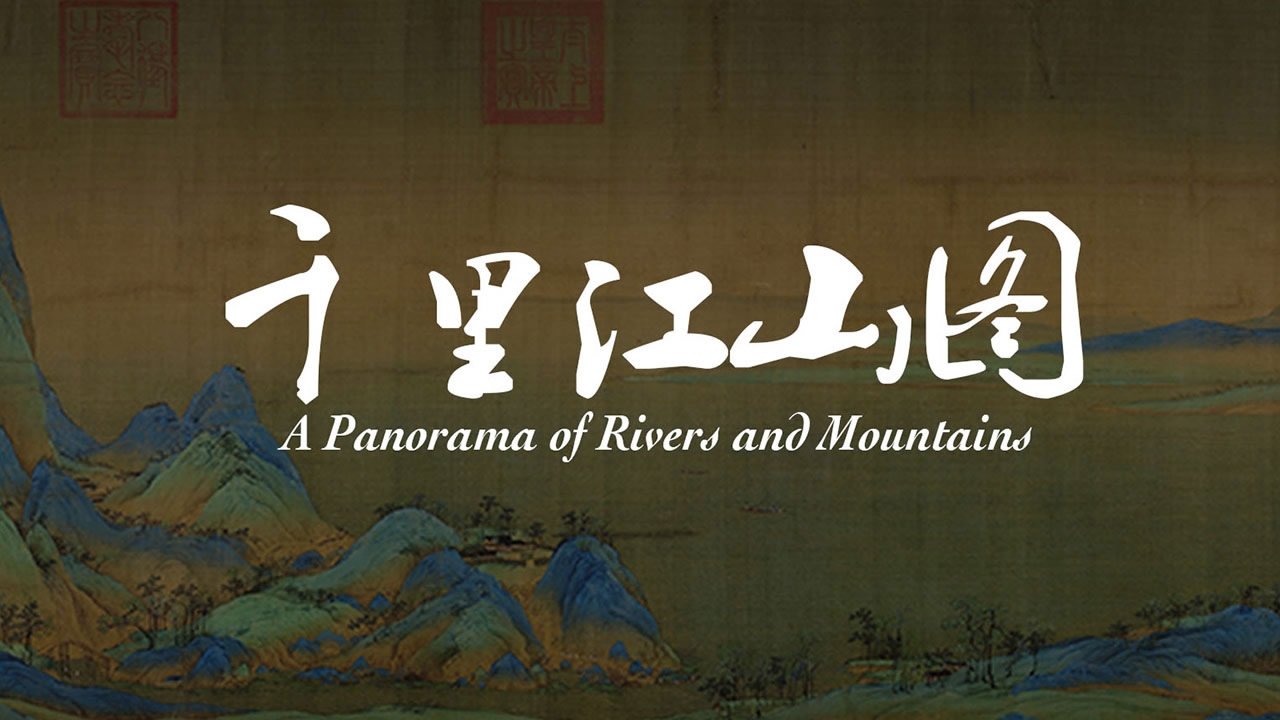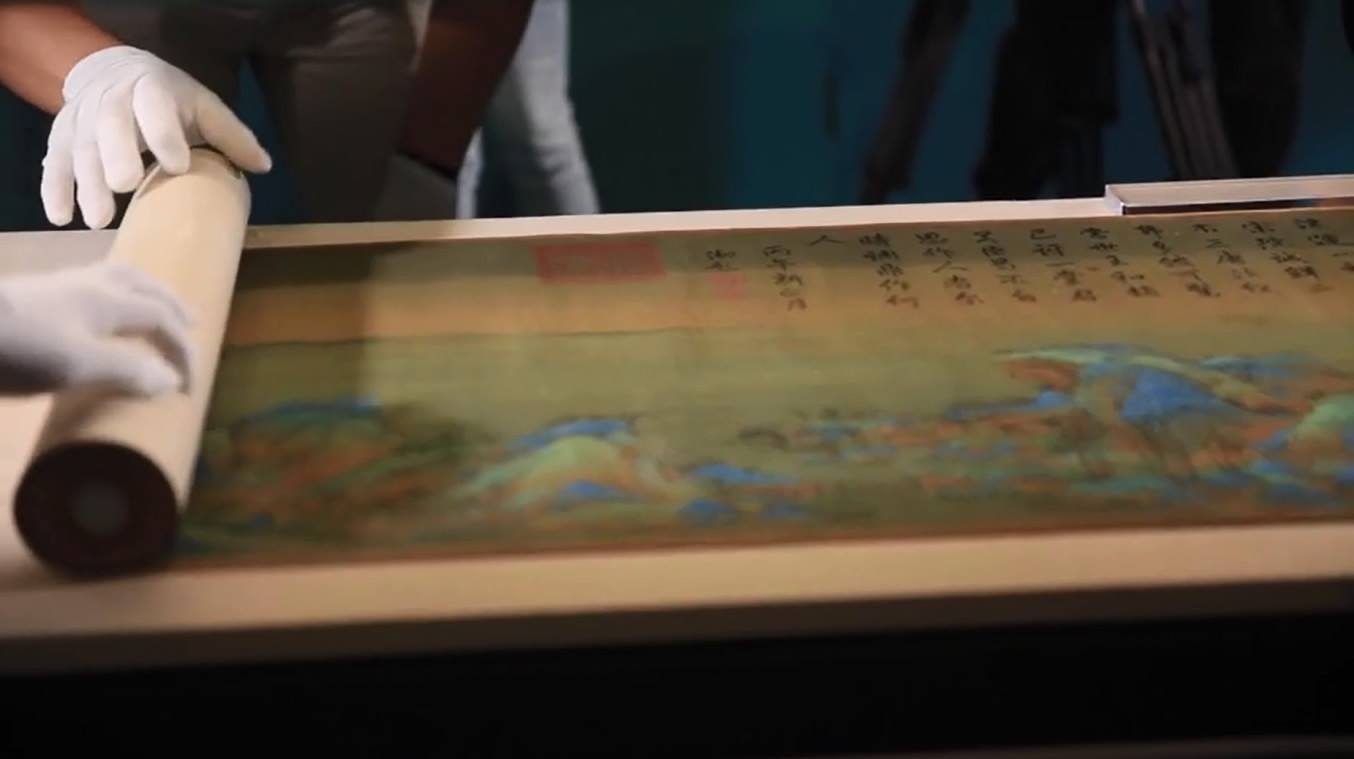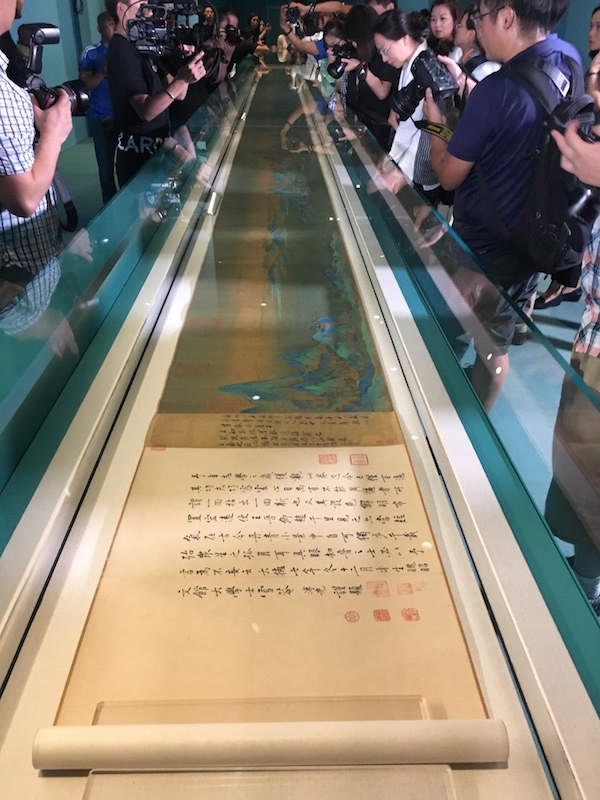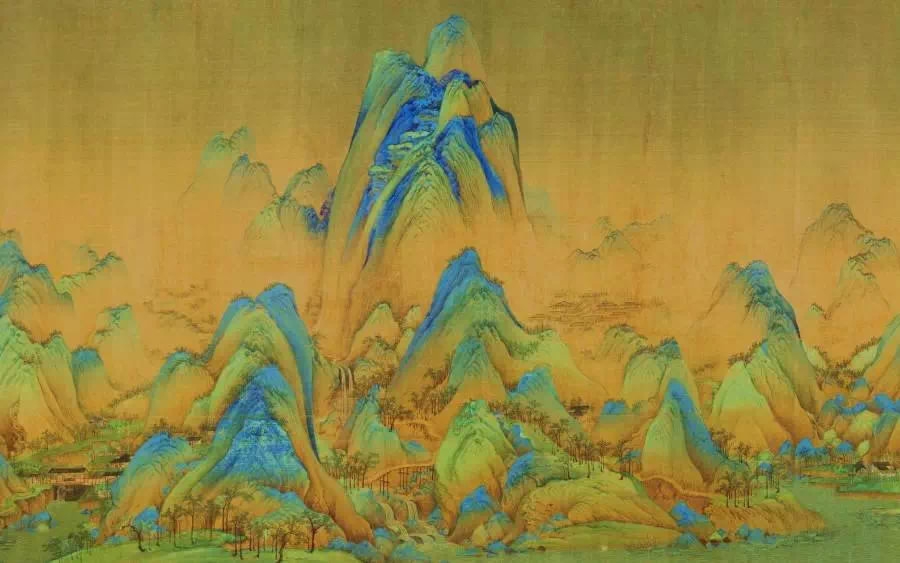
Culture
17:30, 14-Oct-2017
Admiring a 900-year-old landscape painting at Palace Museum
By Li Jingjing

An 18-year-old boy named Wang Ximeng spent half a year creating a 12-meter-long landscape painting in 1096.
He probably couldn’t believe the painting would ever be regarded as a masterpiece, especially after over 900 years, and attract visitors who line up for hours every day just to get a glimpse of his artwork.
The painting, named "A Panorama of Rivers and Mountains", which is now exhibiting at the Palace Museum in Beijing until December 14, has been extremely popular in China since the exhibition opened to the public on September 15.
"It represents the highest artist achievement in the Northern Song Dynasty (960-1127) and even the whole of ancient China in terms of landscape paintings," says Yu Hui, a research fellow at the Palace Museum, in a video introduction to the exhibition.

A screenshot of the Palace Museum's video introduction showing staff unrolling the painting. /CGTN photo
A screenshot of the Palace Museum's video introduction showing staff unrolling the painting. /CGTN photo
Young talented painter
The silk scroll painting measured 51.5 by 1,191.5 centimeters is the only painting of Wang's that has been appreciated by people for generations, since he only lived a short life. Nobody really knows the exact year he died, but it is believed he passed away in his twenties.
He went to study painting at the Royal Palace when he was still a teenager. Displaying great talent, Emperor Huizong, the eighth emperor of Song Dynasty, decided to teach Wang techniques of painting himself.
Many experts believe it might be an artwork that Emperor Huizong told him to draw.
"Emperor Huizong asked him to draw boundless spectacular rivers and mountains instead of everyday life, maybe Emperor Huizong also has his national ideas in it, because rivers and mountains represents political power [in traditional Chinese values]," says Ren Wanping, deputy curator of the Palace Museum, also in the video introduction.

Visitors viewing the painting at the Palace Museum. / Photo via The Paper
Visitors viewing the painting at the Palace Museum. / Photo via The Paper
Artistic value
The rivers and mountains in the painting are in bright blue and green colors, made by using minerals, which make the landscape much more vivid and rich in color.
The waves on the river are another part that shows great patience and techniques of the painter, because his skills let him show every tiny wave. When looking at it from a distance, it feels like a breeze just swept through the river in the painting.
But if you think there’s nothing special in the continuous mountains, think again.
Amid the continuous, almost-same-height mountains, one tall mountain suddenly appears - and it’s much higher than all the others around it.
Art experts believe that it represents the young man’s ambition, standing there, like he is the center of the world.
The exquisite skills in the painting make it hard to believe that it came from a teenager. Historians believe beyond the young man’s ambition and his landscape painting skills, it also contains great value for historical studies into the Song Dynasty.

One part of the painting. /Photo via The Palace Museum
One part of the painting. /Photo via The Palace Museum
How to see it
The painting was exhibited at the Meridian Gate Gallery at the Palace Museum. The Museum won’t charge extra money for exhibitions inside it as long as you bought the ticket for entrance, which is only 60 yuan (nine US dollars).
However, be prepared to wait for a very long time. Every day there will be endless lines outside the gallery as if it was Disney World.
The last time a craze like this was caused by an exhibition, it was for the renowned masterpiece Riverside Scene at Qingming Festival from Song Dynasty in 2015.
But one thing worth noting is that the Palace Museum no longer sells printed tickets. Every visitor needs to book the ticket with their real ID through its official ticketing website.

SITEMAP
Copyright © 2018 CGTN. Beijing ICP prepared NO.16065310-3
Copyright © 2018 CGTN. Beijing ICP prepared NO.16065310-3